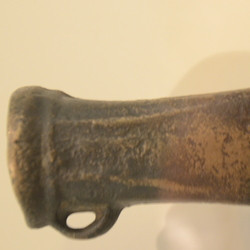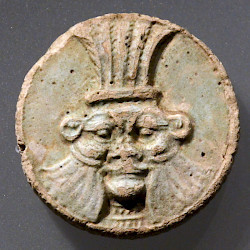Jona Lendering
Jona Lendering read history at Leiden University (MA 1993), specialized in Mediterranean culture at the Amsterdam Free University (MA 1996), and worked at excavations in Holland (Riethoven) and Greece (Halos). After teaching historical theory and ancient history at the Free University for several years, he was one of the founders of a school for history teaching, Livius Onderwijs. Born in Amsterdam, it has now spread to auxiliary locations in Bussum, Dronten, Gouda, Haarlem, Hoorn, Schagen, Zaanstad, and Zoetermeer. As of 2013, Livius Onderwijs has eight teachers, about 500-600 students a year, and offers tours to countries like Italy, Turkey, Iran, and Lebanon. The field trips help to etch into the students' minds some of what they've learned at the school.
Because history is for a large part telling a story, something you do best in your own language, Lendering prefers to publish in Dutch journals. However, he has contributed to the Bryn Mawr Classical Review and Ancient Warfare, while he is the founder of Ancient History Magazine. He is also the publisher and editor of the on-line publication of the Babylonian Chronicles of the Hellenistic Period, a set of important cuneiform sources for the history of the Seleucid and Parthian Near East, transcribed, translated and commented on by Bert van der Spek of the Free University Amsterdam and Irving Finkel of the British Museum. A publication as book is in preparation.
Lendering has written several books and maintains a blog in Dutch. He is the author of several books, including Edge of Empire and Consensus and Crises. For the Livius website, which has received several awards, he collaborates closely with Bill Thayer of LacusCurtius. Lendering is also the webmaster of two daily blogs, the MainzerBeobachter.com and Grondslagen.net.
There are 9380 items in Jona Lendering:

Berg, Church, built over a pagan sanctuary |

Beringen, Tüllenbeil |
Berlin, Altes Museum
When the Altes Museum was founded at the beginning of the nineteenth century, many people believed in Winckelmann’s theory that only the ancient Greeks had been able to create truly great art, and that the only way for artists to…Berlin, Bode-Museum
I am just back from a quick visit to Berlin. Although I had visited the city several times before, I had never been to the Bode-Museum. Stupid me: it is one of the most beautiful museums I’ve ever been to.…Berlin, Neues Museum
The Neues Museum was, for me, the main reason to visit Berlin last week. It turned out to be a bit of a disappointment, although I must add immediately that there were so many interesting objects that I had to…Berlin, Pergamon Museum
The Pergamonmuseum is probably Berlin’s most famous cultural institution. It contains three major collections which, each in itself, might have been fine museums: a classical department, a department of ancient Near Eastern art, and a department of Islamic art. What…Berlin, Zeughaus
The collection of the Deutsches Historisches Museum (German Historical Museum) in the Berlin Zeughaus has a department of Roman and German antiquities. There are 3 items in Berlin, Zeughaus: …Berossus
Berossus (Akkadian Bêl-re'ušunu): Babylonian priest, who wrote a Greek history of Babylonia in the first half of the third century BCE. …Berytus (2)
Berytus (Βηρυτóς): town in Phoenicia, modern Beirut.Roman Berytus Stone eagle with wreath Traders from Berytus are known from Delos, and it is…Berytus (Beirut)
Berytus (Greek Βηρυτóς): town in Phoenicia, modern Beirut.Bronze and Iron Age Tyche, the "good fortune" of Beirut Beirut is a very ancient…Bes
Bes or Bisu: popular ancient deity, originally from Egypt. A relief of Bes from Karatepe The odd-looking gentleman on the picture to the…

A Hellenistic or Roman disk with the face of Bes |